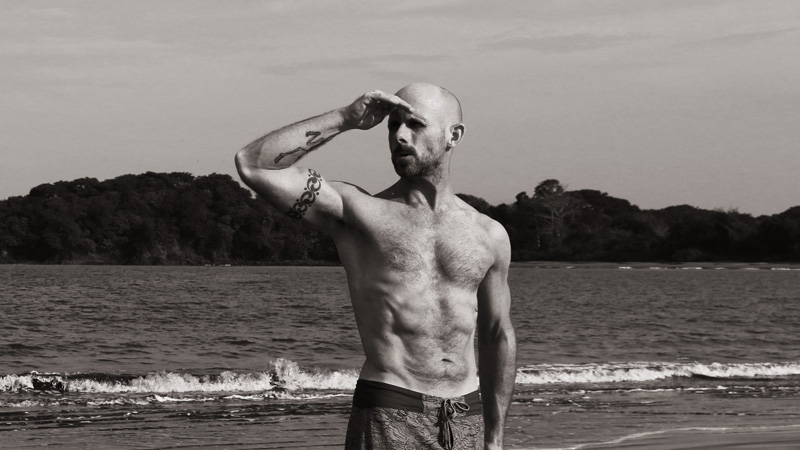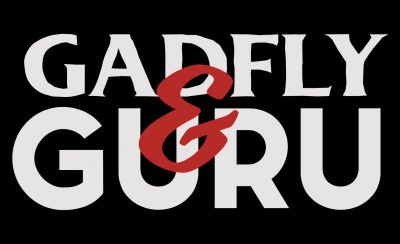I just finished and published a book on physical fitness — The Thinking Person’s Guide to Physical Fitness. You can buy it on Amazon.
For a sense of what the book offers, the Preface and excerpts from several chapters are included below the obligatory “I-can-follow-my-own-advice” photo required of anyone who writes a book on fitness.
In addition, here are some important related pages and blog posts:
Blog Post: Seven Keys to Getting Fit
Excerpts: The Thinking Person’s Guide to Fitness

Preface
Deciding on a title for this book, which ambitiously covers all the important aspects of physical fitness, was tough. I finally settled on the “The Thinking Person’s Guide to Fitness,” and for a few reasons.
For one thing, it has a slightly provocative edge (cheekily implying that all other books are for non-thinkers), which seemed like a nice marketing angle. After all, doesn’t it feel good to purchase a book that validates how smart you know you are?
More seriously, though, I chose this title because a lot of people tend to compartmentalize their “physical” and “intellectual” activities, and therefore don’t put as much thought into fitness as they could. But examining the subject from a more intellectual standpoint pays off in many ways. Most importantly, it allows you to really take charge of your own fitness.
So the title also reflects what the book requires from you and its ultimate goal. I want this book to show you how to be in charge of your own fitness, and this means you have to be a “thinking person” in two important ways. Firstly, you need to learn the key theoretical principles and essential practices for achieving various levels and types of fitness. Secondly, you need to think through what your fitness goals are and the means by which you will reach them.
Fitness, as we will soon explore, is highly context dependent. Both your goals and your circumstances affect the answers to questions about what foods are best and which types of exercise are going to make you the most fit. Because of this, it’s not really possible to make a specific set of rules for all people to follow to become fit and healthy. Instead, it’s ideal to learn a few key theoretical concepts and a collection of practical strategies, and then think through which are most relevant to you and how to go about practicing them.
This approach isn’t for everybody. It requires you to learn some theory about how your body functions and principles for how to improve it, and to do some hard thinking about your goals. It also requires a certain level of self-motivation and organization.
But if you are the type of person who wasn’t daunted by the words “thinking person” in the title, then you are likely willing to expend a little extra mental energy in order to truly be in charge of your fitness. If you do, you will realize some serious benefits. You will not need to rely on anyone else for “one-size-fits-all” exercise and diet programs, you will be able to develop routines that match your specific goals and fit with your personality and lifestyle, and you will have the tools to overcome the hurdles you are likely to encounter.
My (Abbreviated) Story
In my own process of going from the typical American lifestyle of being sedentary and borderline obese to achieving an “amateur-elite” level of physical fitness (if I can humbly say so myself), I found it very difficult and frustrating to find quality information on how to effectively and efficiently become more fit. This isn’t because the theoretical aspects are necessarily hard to understand, but because of how fitness information tends to be packaged.
The vast majority of fitness advice is found in magazine articles and blog posts, which are inherently shallow and piecemeal: they only address specific issues in an isolated way. The information in books is (usually) deeper, and many also provide a dietary and/or exercise program one can follow. However, books are usually centered around a specific approach to diet and/or exercise which prevents them from being truly comprehensive.
Fortunately, I happen to be one of those autodidactic nerds who sometimes becomes obsessed with a field of knowledge and devours everything they can find on the subject until they feel they’ve mastered it. As you can glean by thumbing through the Bibliography, over the course of the four years that I taught myself the principles of physical fitness, I read everything from trendy diet programs to biochemistry textbooks, and I listened to hundreds of hours of interviews with top practitioners and research scientists. Just as importantly, I experimented with almost everything I learned about, discovering for myself what works in the real world, what doesn’t, and why.
In the process of doing all this, I developed a well-rounded and fairly complete understanding of the current state of knowledge in the world of fitness — including exercise, nutrition, and general health and anatomy. And I decided to compile this understanding into the book you now hold in your hands.
How To Use This Book
This guide is divided into four distinct parts. Part I provides a broad introduction to what fitness is and why it seems so hard to achieve, and thus provides the “philosophical underpinnings” for the rest of the book. Parts II-IV then provide advice for achieving different levels of fitness: from the fundamental steps required for basic, all-around fitness (Part II); to intermediate-level ideas and practices for the fitness hobbyist (Part III); and on to the most advanced theories and strategies, ideal for any sort of amateur competitor (Part IV).
I firmly believe that achieving a basic level of general fitness is within everyone’s grasp and that doing so will greatly improve one’s quality of life. Being fit makes you feel better on a daily basis and allows you to fully enjoy what the world has to offer. If this level of general fitness is what interests you, then Parts I & II are all you truly need to read and practice. For those who are already fit but interested in becoming more accomplished in specific sports or activities, Parts III and IV will be your go-to guides.
This book is intended as a handbook and manual, so you do not need to read the entire thing to start making use of it, or even read it entirely in order. In fact, if you are in a hurry to get started, then feel free to skip chapters 1-7 for now, and just use chapter 8 to determine which of Parts II-IV of this book most apply to you and start there. You can always go back and read the initial chapters later.
